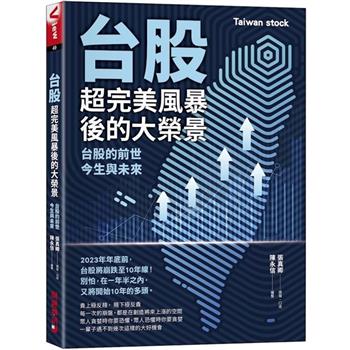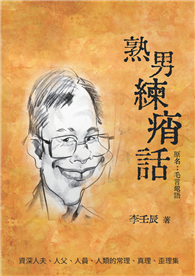175 comics and over 300 famous quotes mix fun relatability with the serious underlying science to give a clearer understanding of how and why tension is triggered, experienced, and resolved.
The first new understanding for most people is that tension happens alongside pleasure (as excitement, anticipation, and desire) as much as it happens alongside pain (as lack, fear, hunger, anger, awkwardness, obligation, and heartbreak). The second is that momentary tension happens because of a present trigger, while persistent tension (anxiety) happens because of an internally maintained trigger. By following the guided immersion in the high and low ends of your individual tension spectrums, you can better understand your options for generating the tension that feel good and minimizing the tensions that feel bad. On the science side this book proposes that the Limbic System (in the brain) acts like a subjective, emotional sense organ. It shows what life is like at the high and low ends of the seven basic tension spectrums so you can be less easily triggered by other people, because you’ll more accurately recognize their tensions as being unrelated to you and the things you care about. This book doesn’t pretend that you can become happy-all-the-time. You’ll feel tension again soon. But you can have a plan and develop habits that reduce the frequency and severity of negative triggers, and increase the frequency and severity of loving, enthusiastic, hopeful, joyful triggers. The book is called The Next Three Traits because it ties the information up in a quick three-letter shorthand (RCS, SCR, CSR, RSC, SRC, or CRS) that makes it easier to discuss tension stacking with other people. A person’s three letter Limbic profile can stand alone as its own personality type ("I’m SCR"), knowing that it’s only the tension parts of someone’s psychology. Or, it can be added as the next three traits to Myers-Briggs (ENTJ RSC), Enneagram (CSR-8), Five Factor Model, Love Languages, Astrology ("I’m an SCR Taurus"), or any other classification system. This adds scientific rigor to those systems and helps separate Limbic influences from the other aspects of personality that each system is already measuring.| FindBook |
有 1 項符合
The Next Three Traits: The Psychology of Tension的圖書 |
 |
The Next Three Traits: The Psychology of Tension 作者:Gasner 出版社:Glenn Gasner 出版日期:2023-05-03 語言:英文 規格:平裝 / 402頁 / 22.86 x 15.24 x 2.26 cm / 普通級/ 初版 |
| 圖書館借閱 |
| 國家圖書館 | 全國圖書書目資訊網 | 國立公共資訊圖書館 | 電子書服務平台 | MetaCat 跨館整合查詢 |
| 臺北市立圖書館 | 新北市立圖書館 | 基隆市公共圖書館 | 桃園市立圖書館 | 新竹縣公共圖書館 |
| 苗栗縣立圖書館 | 臺中市立圖書館 | 彰化縣公共圖書館 | 南投縣文化局 | 雲林縣公共圖書館 |
| 嘉義縣圖書館 | 臺南市立圖書館 | 高雄市立圖書館 | 屏東縣公共圖書館 | 宜蘭縣公共圖書館 |
| 花蓮縣文化局 | 臺東縣文化處 |
|
|
圖書介紹 - 資料來源:博客來 評分:
圖書名稱:The Next Three Traits: The Psychology of Tension
The PDA Effect: An Autistic Teenager’s Guide to Demand Avoidance
Align Your Mind: Tame Your Inner Critic and Make Peace with Your Shadow Using the Power of Parts Work
The Joy Reset: Six Ways Trauma Steals Happiness and How to Win It Back
Rethinking Employee Resilience: Why Our Current Approach to Worker Burnout Is Failing, and How to Fix It
The Ambition Trap: How to Do Meaningful Work Without Burning Out
How Do You Choose?: A Human Design Guide to Choosing What’s Right for You at Work, in Love, and in Life
Assessing and Diagnosing Young Children with Neurodevelopmental Disorders: A Dsm-5-Tr Compliant Guide
Assessing and Diagnosing Young Children with Neurodevelopmental Disorders: A Dsm-5-Tr Compliant Guide
International Handbook of Emotions: Resourceful Cultural Perspectives, Vol. 2
Women With ADHD Book: Insights and Strategies for Ladies
Align Your Mind: Tame Your Inner Critic and Make Peace with Your Shadow Using the Power of Parts Work
The Joy Reset: Six Ways Trauma Steals Happiness and How to Win It Back
Rethinking Employee Resilience: Why Our Current Approach to Worker Burnout Is Failing, and How to Fix It
The Ambition Trap: How to Do Meaningful Work Without Burning Out
How Do You Choose?: A Human Design Guide to Choosing What’s Right for You at Work, in Love, and in Life
Assessing and Diagnosing Young Children with Neurodevelopmental Disorders: A Dsm-5-Tr Compliant Guide
Assessing and Diagnosing Young Children with Neurodevelopmental Disorders: A Dsm-5-Tr Compliant Guide
International Handbook of Emotions: Resourceful Cultural Perspectives, Vol. 2
Women With ADHD Book: Insights and Strategies for Ladies
|











